34+ Different Types Of Windows (Styles, Frames) With Pictures For Your House
Windows are often overlooked as they serve a crucial function in our homes. They provide insulation, natural light, and noise reduction. Despite their generic appearance, there are over 20 types of windows, each with its unique look and purpose. Whether you’re planning a home renovation, constructing a new house, or simply looking to upgrade your windows, it’s essential to know the different types available.
In this article, we’ll explore the various types of windows, from the simple single-hung window to the more complex skylight and stained glass options. We’ll also touch on the different materials used in window frames, including wood, vinyl, aluminum, and fiberglass. Additionally, we’ll provide a buying guide that takes into account energy efficiency, durability, and aesthetic appeal.
The world of windows is vast and varied, but with this comprehensive guide, you’ll be well-equipped to make an informed decision about which type of window best suits your needs.
How many types of windows are there?
Windows come in a wide range of styles, with over 20 distinct types that vary significantly in terms of design, insulation, ventilation, and other features. One notable aspect is the diversity among attached window types, which can differ in frame materials and pane configurations. This array of options allows homeowners to select windows that suit their specific needs and preferences.
Types of windows

Windows are often viewed as a straightforward feature in a home, providing natural light and serving as a base for window treatments. However, the type of window chosen should be determined by both functional and aesthetic considerations, rather than solely focusing on one aspect or the other. Here’s an overview of some common types of windows that you should familiarize yourself with:
Single Hung Window

The classic window design is a staple in both residential and commercial settings. Characterized by its bottom sash, this style allows for effortless opening and closing through manual operation of the sash itself. Notably, it tends to swing outward, making it an ideal choice for smaller living spaces where space constraints are a concern. The benefits of this design include its affordability, ease of installation, and versatility in matching any interior aesthetic.
Furthermore, it is highly energy efficient, which can contribute significantly to overall building sustainability. However, there are some drawbacks to consider. For instance, the ventilation provided by this style may be somewhat limited compared to other options. Additionally, regular cleaning from the inside may be necessary to maintain optimal functionality.
Double Hung

The double-hung window stands out as a top choice among American homeowners due to its impressive blend of functionality and practicality. Its unique design features two operable panels – an upper and lower sash – allowing users to selectively open one or both windows for optimal airflow, cleaning, and energy efficiency. This versatility is further enhanced by the ability to open the window outward, making it particularly well-suited for narrow spaces.
While it may not boast the same level of airtightness as other types of windows, its affordability and design flexibility make it an attractive option for many homeowners. As with vinyl replacement windows, double-hung options are a common consideration for those looking to upgrade their window setup.
Oriel

One type of bay window that stands out for its unique aesthetic appeal is characterized by extending the room’s area outwardly. Typically installed on upper floors, it relies on brackets supported by corbels and similar hardware to secure itself in place. The benefits of this design include its high visual value, increased natural light intake, and the ability to provide a panoramic view of the exterior surroundings.
However, it’s essential to note that customizations are required for window treatments and decorations, making it less suitable for those who prefer limited artificial lighting in their space.
Cottage
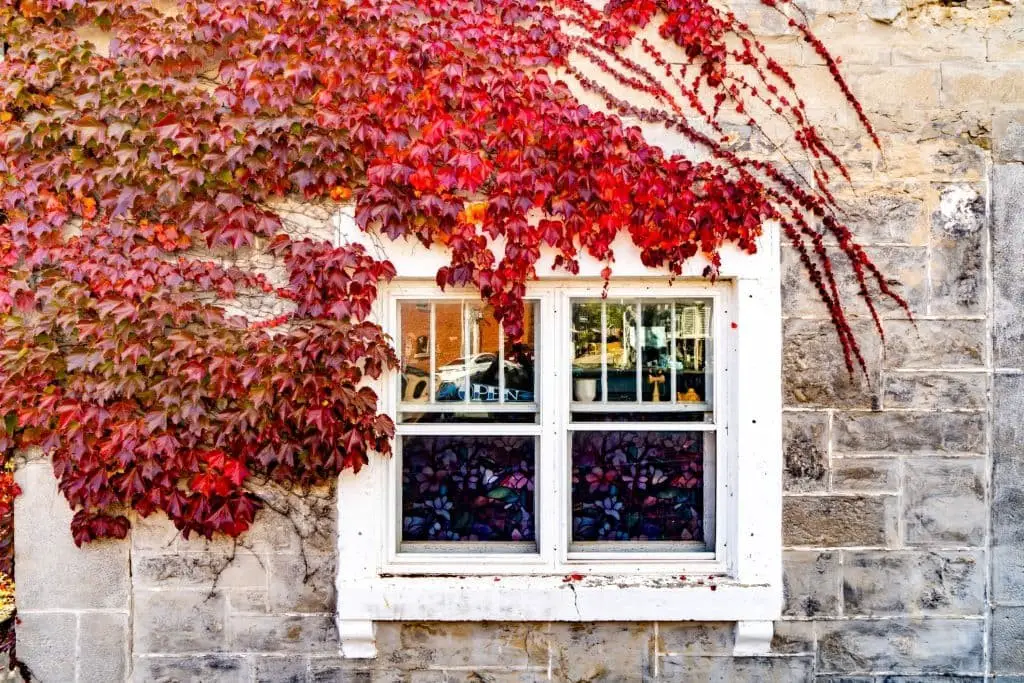
The Tudor or Georgian-style window, a subtype of the double-hung window, stands out for its characteristic upper sash being smaller than the lower one. While it may present some cleaning challenges compared to traditional double-hung windows, this design’s flexibility, low maintenance requirements, and affordability make it an attractive option for many homeowners. Its architectural versatility is particularly noteworthy, making it a worthwhile consideration despite the minor drawbacks.
Two-Panel Slider

The most ubiquitous sliding window design features two panels that slide horizontally from left to right, providing a space-efficient solution as they don’t protrude outward. This configuration is not only easy on the installation front but also offers enhanced ventilation and natural light. Additionally, it boasts low maintenance requirements, an affordable price point, and versatility in complementing both timeless classic and modern architectural designs.
Three-Panel Slider

The panoramic sliding window boasts an innovative design, featuring a fixed central panel surrounded by two moving panels. This unique configuration provides an expansive view of the outside, much like a revolving door. In terms of its other characteristics, including both advantages and disadvantages, this type of window is remarkably similar to the traditional two-panel slider.
Picture Window

Among the most distinctive types of windows, this style is notable for its permanent installation – once in place, it cannot be adjusted. Essentially, it’s a glass panel designed to frame the exterior scenery, much like a picture frame. This makes it an ideal choice for homes with vaulted ceilings. A major advantage of this window type is its exceptional energy efficiency. What’s more, you won’t need to invest in window treatments, as they’re not required.
Additionally, installation and maintenance are relatively straightforward. However, one potential drawback is the lack of ventilation, which may be a consideration for some.
Deadlites – Sash-Only
The deadlites and picture windows are often mistaken for each other due to their striking resemblance. The primary distinction lies in the standalone sash characteristic of deadlites, which lacks frames, whereas picture windows feature framed panes. Despite sharing some similarities with picture windows, deadlites also fail to provide significant ventilation benefits for a home. However, they do offer a more budget-friendly alternative.
Hopper Windows

Tilting windows are a type of casement window that hinge at the bottom, allowing for inward tilting. Their rectangular shape typically lies horizontally. These windows boast several advantages, including high energy efficiency due to their ability to provide excellent insulation, ease of operation, and low maintenance requirements. However, they also have some drawbacks. For instance, during heavy rainfall, tilting windows can inadvertently allow water into the room.
Moreover, as the window tilts inward, it may compromise the privacy of the space.
Awning Windows
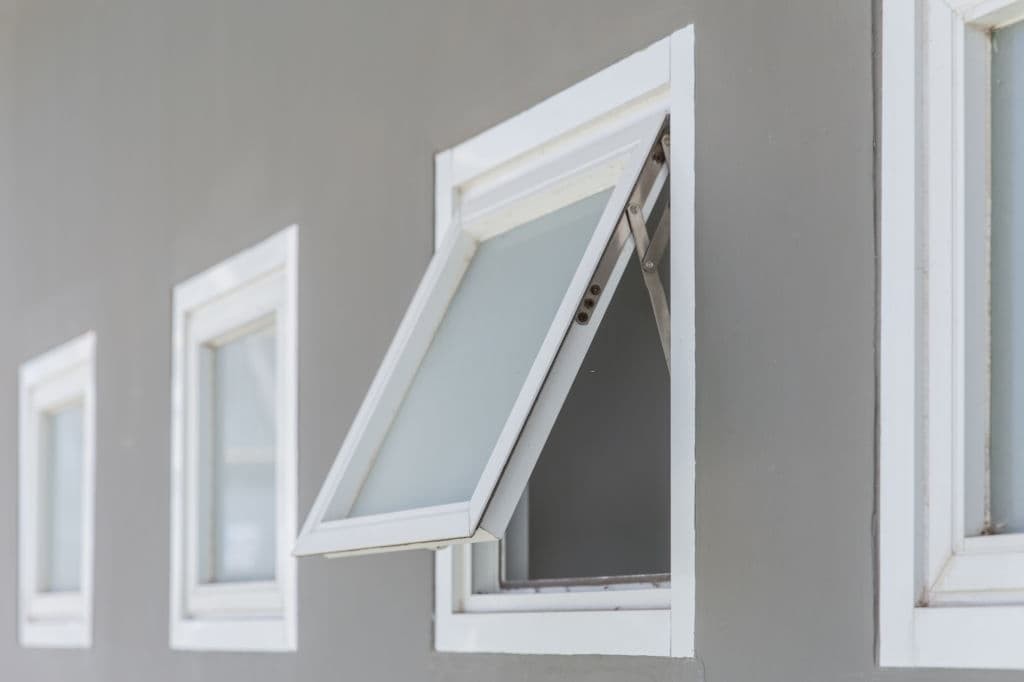
The outward-tilting casement window deviates from its hopper counterpart in a significant way. By addressing the size constraints imposed by hopper windows, this design allows for greater flexibility when it comes to room layouts. Nonetheless, those who delight in placing potted plants and decorative items near their windows may find this style restrictive.
On a more positive note, casement windows are known for their energy-efficient properties, providing excellent insulation and keeping water and snow at bay. However, this design comes with its own set of drawbacks – it tends to be pricier than other options and the outer pane can prove challenging to clean.
Casement windows

Windows that pivot at their axis, allowing them to slide open in either a vertical or lateral direction, offer an unimpeded view. Crafted from solid glass, these windows boast a high level of transparency and can range from moderately priced to more expensive depending on the quality of the glass used.
Fanlight Window


The epitome of high-end, old world European elegance can be found in this type of fanlight. Its semicircular shape is characterized by ribbed bars on the circular top, imparting an air of sophistication. Typically installed above doorways or windows, it’s often hinged to a transom window in suburban homes, where its unique design and functionality are showcased.
Egress Windows

Egress windows transcend functional and stylistic boundaries, serving as a vital escape route during emergencies. Typically installed in basements, these windows are designed to provide a safe exit in case of an unexpected situation. Notably, their installation can be quite costly due to the often-required excavation process.
It’s essential to highlight that certain states within the US and countries worldwide mandate the construction of egress windows in basements, emphasizing their importance as a critical safety feature.
Transoms

Transoms are often the focal point of high-end architecture, serving as the most common type of accent window. Gone are the days when they were limited to traditional fan-shaped designs – modern transoms can seamlessly integrate with a wide range of architectural styles. One of their greatest strengths lies in their ability to flood interior spaces with natural light, while also providing effective insulation and ventilation.
However, one drawback of this type of window is its notoriously tricky cleanliness.
Bay Windows

Bay windows with hexagonal shapes bring an embossed look to your window, creating a unique visual appeal. Their irregular shape also offers more space within the room, which is a definite upside. As mentioned earlier, bay windows are a type of oriel window, providing an expansive view of the exterior landscape. On the flip side, these windows can potentially obstruct outdoor views and their repair and maintenance may prove costly.
Bow Windows

In a departure from traditional bay windows, bow windows boast a curved design that provides an unobstructed view of the surrounding landscape. These larger-than-usual windows not only expand interior space but also inject elegance and sophistication into any room. The panoramic views they offer are further enhanced by excellent insulation and natural light. However, their unique shape can make cleaning a challenge, while their large size may also introduce unwanted heat and light into rooms.
Moreover, bow windows tend to be a costly investment.
Jalousie Windows

When prioritizing ventilation, the jalousie window stands out as a timeless classic. Its distinctive feature is the arrangement of parallel glass panels and wooden or acrylic louvres. The clever design allows for effortless opening, closing, and tilting using a central lever. This versatility makes it suitable for any interior style, offering ample ventilation and maintaining good airflow even in harsh weather conditions, such as heavy rains and snowstorms.
The adjustable tilting and slanting degree enables you to regulate the flow of air according to your needs. However, one major drawback is its relatively low security level, as the parallel glass panels can be vulnerable to damage.
Arched Windows

In architectural terms, the cathedral style window is characterized by its rounded tops and symmetrical sides, reminiscent of the grand windows found in churches and cathedrals. Traditionally, these windows are fixed in place, serving as a secondary layer to an existing glass installation, allowing for subtle light filtration and ventilation.
Yet, modern innovations have introduced encased designs that enable opening and closing functionality, offering a fresh perspective on this classic architectural element.
Garden Style Window

The four-sided skylight is an ideal choice for greenhouses and gardens, designed to capture sunlight from every angle. While its primary purpose is for botanically inclined spaces, it’s not limited to these applications. If you crave an abundance of natural light in your home or workspace, this window type is a great option.
However, there are some factors to consider when installing a four-sided skylight.
First, you’ll need a sturdy architectural foundation to support its weight and structure. Second, improper installation can impede the flow of your exterior spaces, compromising their functionality.
Glass Block Window

One of the most popular choices for residential and commercial window solutions, glass block windows provide an added layer of security and privacy by obscuring interior spaces from outside view. The frosted panels can be designed to suit various architectural styles, offering a versatile solution for homeowners and businesses alike.
While glass block windows offer many benefits, they do have some limitations.
For instance, they may not provide the best ventilation options, which could lead to indoor air quality concerns. Furthermore, the distorted images and scattered light reflections that occur can be distracting to some individuals. As such, this type of window may not be ideal for those who are easily perturbed by these factors.
Storm Window

The storm window is designed with insulation in mind and can be installed either inside or outside an existing glass window. Its primary function is to regulate your home’s temperature, keeping it warm during cold seasons and cool during hot ones. Additionally, this type of window is relatively easy to install, budget-friendly, and enhances the overall efficiency of traditional windows.
While it offers many benefits, it may not be the best choice for homes with wooden frames or exteriors, as condensation between the layers can cause moisture damage that requires high maintenance.
Pivoted Windows
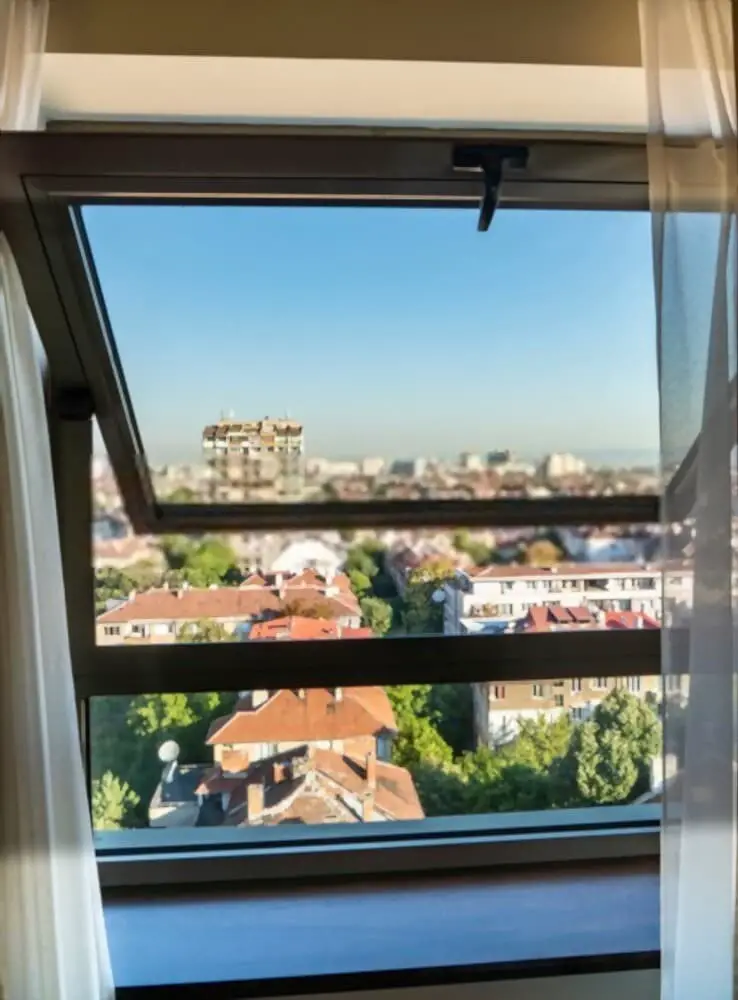
In contrast to traditional casement windows, this type of window employs a pivoting opening mechanism, allowing the entire window to pivot in either a horizontal or vertical direction from its central point. Typically found in commercial settings, these windows offer limited ventilation but can still tilt up to 180 degrees. One of their key advantages is their versatility, as they are low-maintenance, highly functional, and energy-efficient.
Louvered Windows

Parallel slat treatments are often misunderstood as a type of window themselves, when in fact they’re a clever arrangement of wooden slats designed to filter light, regulate air flow, and even keep excess moisture at bay. This versatile solution is particularly popular in Hispanic-inspired homes, as well as those with Mediterranean or tropical flair, where its unique charm can add an extra layer of character to the overall aesthetic.
Corner Windows

A corner window may seem like a straightforward unit, but it actually comprises two or more sashes that meet at the corner, giving it its unique name. What sets these windows apart is the need for a specialized frame that allows them to create an opening without the requirement of a traditional corner support – this added complexity contributes to their higher cost.
One thing to keep in mind is that corner windows are fixed, meaning they cannot be opened or closed like standard windows.
Nevertheless, they can be a stylish addition to your home, bringing a touch of modernity and sophistication.
Gable Windows

While often found on pitched roofs, skylights should not be confused with dormers. A defining characteristic is their triangular shape, which protrudes from the wall between the edges of the roof. Similarly, although they have a flatter surface than traditional windows, skylights excel at flooding lofts and attic rooms with natural light, making them an efficient choice for these spaces.
Ventilators
Rather than being a type of window itself, ventilators serve as an essential component to ensure a consistent flow of fresh air from outdoors to indoors. Their ability to adapt to varying humidity levels enables them to regulate airflow in a room, making them a staple feature in many large homes and commercial settings alike.
Clerestory Windows

In various settings such as libraries, gymnasiums, and study rooms, you may have noticed a distinctive feature – a linear array of small window panels installed along the top of a wall or near the ceiling or roof line. These installations are commonly found in tightly sealed rooms where they allow for the gentle influx of natural light and controlled ventilation.
This cost-effective solution not only provides illumination for large spaces but also enhances the overall aesthetic appeal of a room, making it an attractive option for those seeking to optimize their space.
Lantern Windows

While often conflated with skylights, lantern windows actually possess distinct characteristics. Unlike skylights, they can be installed in either pitched or flat roofs, projecting outward from the surface. This design allows for more effective light diffusion across all angles, making them an ideal choice for one-storey extensions and attic rooms alike.
Additionally, lantern windows are a shrewd investment for anyone seeking to create the illusion of a larger, more expansive space – perfect for maximizing the sense of grandeur in any room.
Skylight Windows

Skylights, unlike traditional egress windows, are often found in attic rooms rather than basements. Their primary purpose is to harness natural daylight while offering an unobstructed view of the sky – making them a sought-after feature for vacation homes and cabins. However, these benefits come at a cost. Skylight installation and maintenance can be costly, and improper setup may compromise the integrity of the roof over time.
Although rare, skylights have also been linked to roof leaks, emphasizing the importance of careful planning and execution during the installation process.
Round Windows

The Gothic-Victorian inspired window style stands out with its absence of round shapes, encompassing oval, elliptical, and half-round designs instead. This unique feature makes it an ideal choice for those seeking to create a striking focal point in the room while still allowing ample natural light and ventilation. However, it’s essential to consider that this type of window is fixed, meaning it cannot be opened or closed.
Stained Glass Windows

While stained glass windows are often admired for their aesthetic appeal – featuring vibrant images, high customizability, and mosaic-like designs – they also possess practical benefits. Notably, these windows can enhance your home’s security, provide a measure of privacy, and expertly regulate natural light. It’s no wonder they’re a staple in many churches, where functionality meets beauty.
Metal Framed Windows

Following World War II, metal-framed windows began to emerge as a popular choice for homeowners seeking enhanced security features. Over the years, they have evolved to incorporate modern designs while maintaining their reputation for durability and longevity. Two of the most prominent types of metal-framed windows are steel and aluminum-based options, which offer exceptional workability, reliability, and an extended lifespan.
Dormer Windows
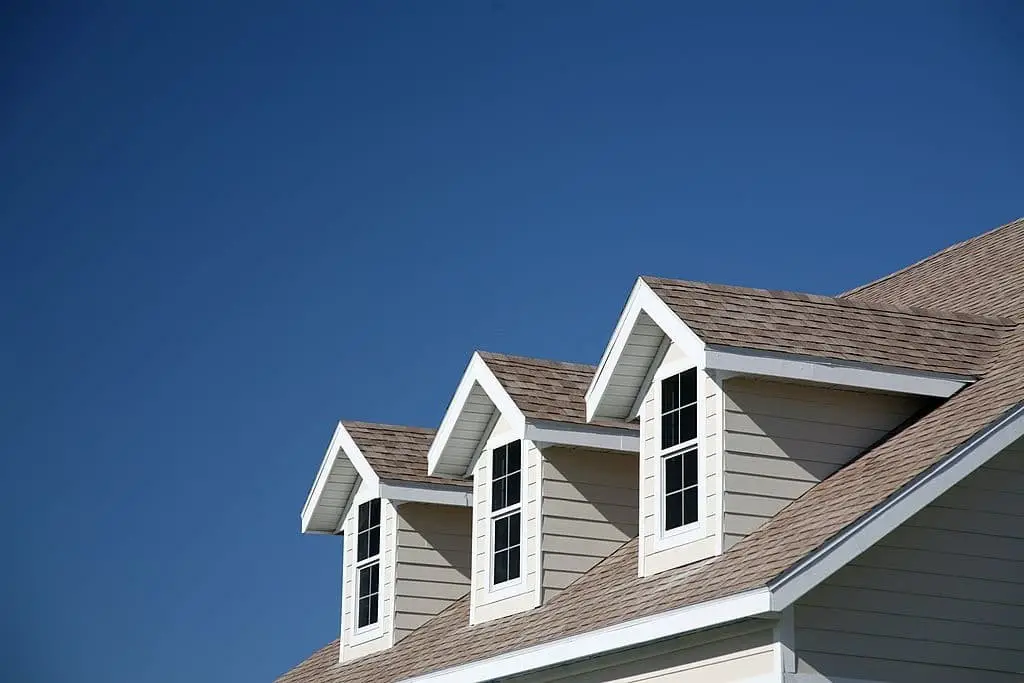
Dormer windows excel in bringing natural light to angled roofs, particularly those with vaulted ceilings in attic bedrooms or lofts. They project vertically from the framed structure, slightly protruding from the roof’s pitch and often feature their own small roof. This design element is well-suited for cottage-style, Colonial, and revival-style homes, as well as any residence with a sloped roof design.
The result is a harmonious blend of form and function, perfect for bathing interior spaces in warm, natural light.
Sash Windows
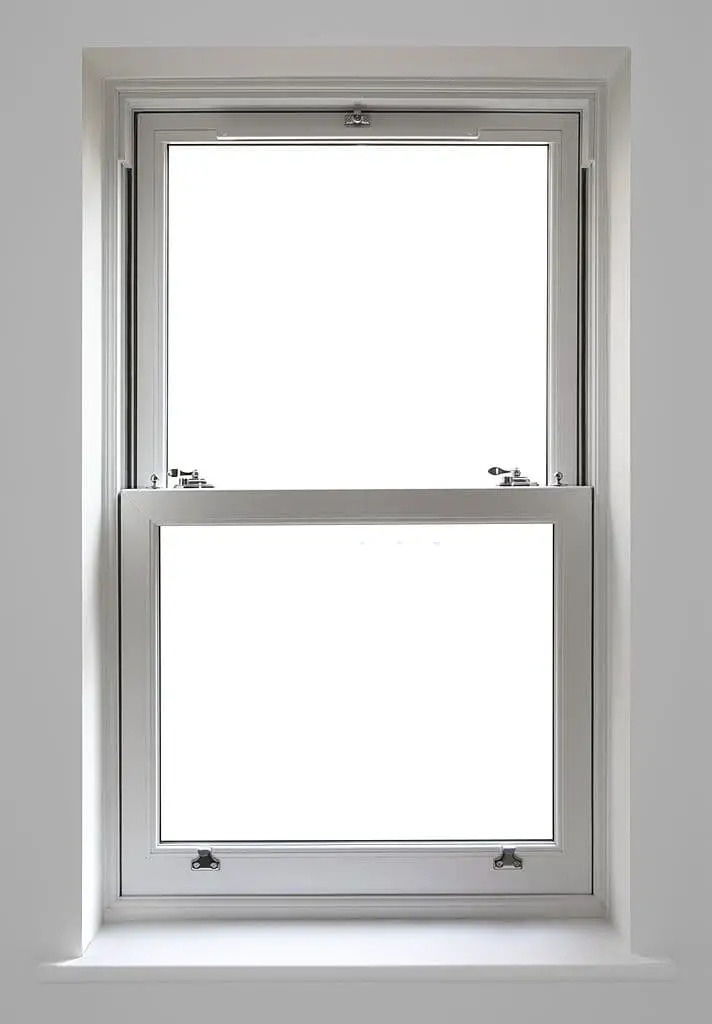
At its core, the sash refers to the movable portion of a window or the horizontal/vertical frame that supports the glass pane. This defining characteristic is what distinguishes single-hung and double-hung windows, with the latter featuring two sashes hinged together.
French Windows
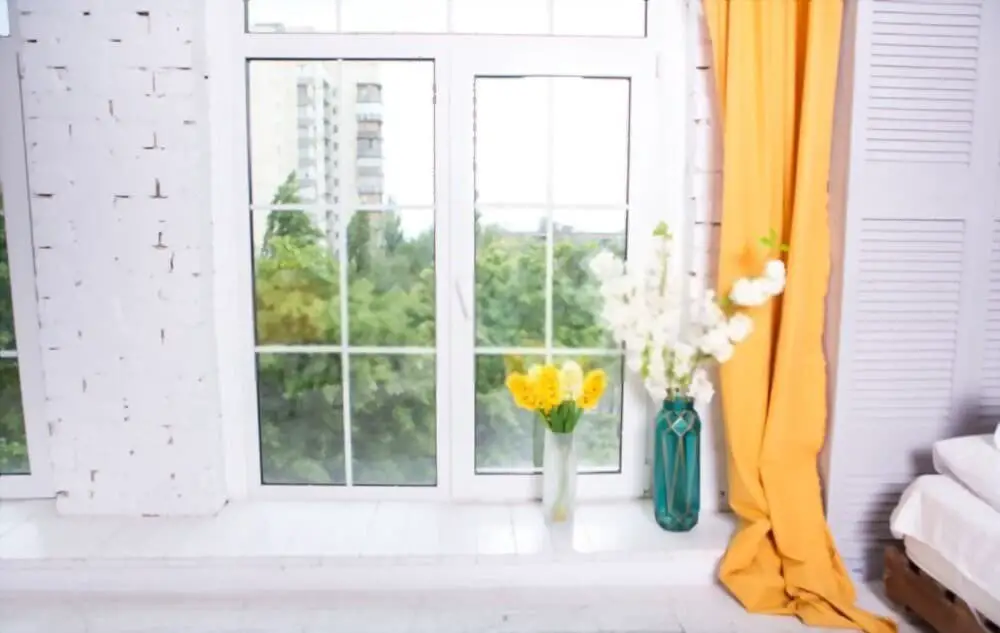
The French window, a type of double-sash window, is characterized by its large size and hinged design that allows it to open inwardly. This unique feature provides unobstructed views of the surrounding balcony or scenery once opened. While offering an unparalleled aesthetic appeal, French windows are not particularly renowned for their security features. In fact, they can be easily broken, which may be a concern for homeowners seeking to install secure windows in their homes.
Nevertheless, for those prioritizing visual elegance, French windows should certainly be considered.
Window panes
The glazing component, often referred to as the glass sheet or window pane, plays a crucial role in windows. Its primary functions are to provide ventilation and insulation to a room. When it comes to selecting the right type of glazing for your windows, regardless of their style, this decision is essential.
Triple Pane
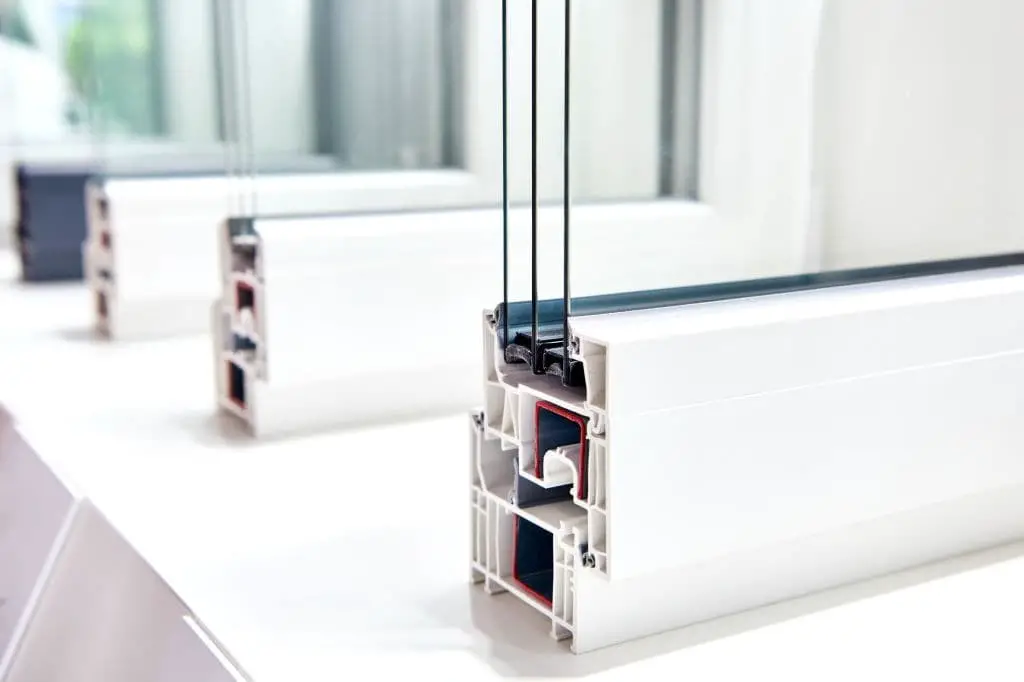
The triple-pane window has gained immense popularity as one of the most modern innovations in the field. Characterized by its unique three-layer composition, this design boasts two layers of trapped gas separating each pane of glass. This clever configuration yields impressive results, providing enhanced energy efficiency, superior insulation, and improved soundproofing. Additionally, it offers increased protection against condensation during harsh winter months.
While this premium product excels in several key areas, its benefits come at a price – literally. The triple-pane window is also more expensive, high-maintenance, and heavier than other options, necessitating a sturdier frame to support its bulk.
Double Pane

Double-pane windows are the most widely used type of window panes. They consist of two sheets of glass separated by a layer of argon gas. This trapped air serves two purposes: it helps hold the window tightly in place, while also providing additional insulation and energy efficiency. This design feature has several benefits, including noise reduction and condensation prevention – particularly useful during cold winters or rainy seasons.
However, double-pane windows do come with some drawbacks; they can be costly to repair and may not be the best choice for regions with extreme summers.
Quadruple Pane

The most advanced type of window panes currently available features a unique design, comprising four glass sheets separated by three chambers filled with trapped gas. This innovative configuration offers significant advantages over its predecessors, including improved thermal insulation and noise reduction. However, it also comes with increased costs due to the need for stronger, more substantial frames that can support the additional structural demands.
Types of window frames
When it comes to windows, the underlying structure is just as crucial as the window itself. The type of material used for the frame can greatly impact its overall performance. While there are many options available, a few stand out as being particularly popular and effective.
Wood

Wooden window frames have a timeless charm that continues to captivate homeowners. Their enduring popularity stems not only from their aesthetic appeal but also from the practical advantages they offer. For instance, repairing or replacing wooden frames is relatively straightforward and affordable. When properly maintained, these frames can withstand the test of time, showcasing remarkable durability.
Nevertheless, it’s essential to acknowledge the inherent weaknesses of wood frames when exposed to moisture and insect infestations, which may influence your decision if you choose this type of frame.
Vinyl

Made from PVC, a material synonymous with pipes and plumbing supplies, this window frame type boasts exceptional durability and affordability. Its popularity stems from its low-maintenance nature and energy efficiency benefits. However, there are some drawbacks to consider. For instance, color fading can be a significant issue in hot climates, making replacement the only viable solution as it cannot be repainted.
Furthermore, PVC frames may not retain their value well, potentially impacting resale prospects.
Aluminum

Aluminum is often considered the ultimate material for its impressive trifecta of properties: longevity, durability, and versatility. Notably, it outperforms both vinyl and wood in noise-blocking capabilities. Its exceptional weatherproofing abilities make it an excellent choice for various architectural styles, as well. Nevertheless, aluminum does have some drawbacks. It has a tendency to absorb cold temperatures poorly, which can impact its insulating properties.
Furthermore, while it is generally more expensive than fiberglass and vinyl, the benefits it offers in terms of durability and longevity may outweigh these additional costs.
Fiberglass
Fiberglass window frames may not be a household name, but they’re certainly worth knowing about. This unique material stands out for its unparalleled durability and low-maintenance requirements. Comprising sheets of fiberglass patterned into a frame, its appearance is remarkably similar to that of vinyl windows. One major advantage of fiberglass lies in its weatherproof properties, which make it an excellent choice for areas prone to harsh weather conditions.
Additionally, this material is adept at blocking out noise, providing superior insulation and allowing for easy repainting. While it may come with a higher price tag than other options, the benefits it offers make it a compelling choice for those seeking a reliable and long-lasting window frame solution.
Buying guide
The role that windows play in enhancing the aesthetic appeal and monetary value of a property cannot be overstated. Whether you’re undertaking a comprehensive home renovation or simply upgrading individual rooms, the quality and style of your windows can make all the difference. The type of window you have, whether UPVC, aluminum, or timber, not only affects the ambiance but also reflects your personal taste and design preferences.
Old-fashioned, dated, or misted windows, on the other hand, can rapidly detract from a property’s overall appeal, as they are often one of the first features to catch the eye. If you’re in the market for new windows, it’s essential to define your desired style before beginning your search. A great place to start is at timberwindows-direct. co.
uk, where you’ll discover an impressive range of beautifully crafted engineered timber windows that can elevate any space and complement a wide variety of architectural styles.
What to Consider
When considering new windows, cost is just one aspect to factor in. A well-made window can withstand the test of time, making any initial investment worthwhile. As you weigh your options, think about the style of window that suits your home’s aesthetic. This decision will have a lasting impact, with the right choice ensuring your home looks great now and for years to come.
For instance, a Georgian bar design within a window can elevate your home’s visual appeal, making it look like it was plucked straight from a magazine. Ultimately, if you choose the right window, you won’t need to worry too much about dressing it up – its inherent beauty will speak for itself.
Energy Efficiency
Old windows have a significant flaw – they’re terrible at letting heat escape. While this might be tolerable during the summer months, it’s a major issue when fall or winter roll around. The good news is that upgrading to new timber windows with proper glazing and engineered timber construction can significantly boost your home’s energy efficiency, potentially resulting in lower energy bills.
Timber, Plastic, UPVC, Aluminum – Which one is best?

While initial appearances may deceive, plastic and UPVC windows can suffer from solar discoloration, resulting in an unappealing yellow hue that’s a far cry from the attractive exterior you envisioned. Conversely, aluminum windows often possess an industrial aesthetic that may not align with your desired visual identity.
In contrast, engineered timber windows offer a more eco-friendly solution, arriving pre-stained and boasting exceptional value for money due to their unique, stylish design.
Not only do they provide impressive performance, security, and durability, but also represent the best balance of quality and affordability.
FAQs
Beyond the topics we’ve already explored, it’s essential to consider a few additional notable FAQs that can shed light on various aspects of Windows. This includes key takeaways and insights related to the operating system, which are just as crucial for a well-rounded understanding.
How can I get a free window replacement for my house?
For those seeking cost-free window replacements, it’s essential to explore available options. Fortunately, there are programs that cater to specific groups, such as qualified individuals who can benefit from free window replacement software. However, these initiatives may not be widely accessible, and homeowners must take the initiative to investigate further.
One possible avenue is contacting local government agencies responsible for human and social services.
By calling your county, city, or state department, you can inquire about potential free window replacements, which might be available to those who qualify.
Another option is to explore forgivable home repair loans offered by non-profit organizations. These programs typically have specific requirements that must be met before a loan is granted. If you meet the criteria, you may not need to pay back the loan at all.
For homeowners in rural areas, there are federal programs worth investigating. The US offers rural repair and rehabilitation grants that cover free window replacements, making it an opportunity that shouldn’t be overlooked.
Finally, FEMA (Federal Emergency Management Agency) and WAP (Weatherization Assistance Program) offer federal assistance for home rehabilitation and repairs, particularly in the aftermath of natural disasters.
This aid not only helps restore damaged properties but also promotes energy efficiency in homes. As a result, it’s crucial to check if you qualify for these programs, especially if you’re looking for ways to revitalize your home without breaking the bank.
What is the most efficient window?
Casement windows remain a top choice for energy efficiency due to their ability to control airflow, filter light, and maintain a secure seal that resists damage. Additionally, various upgrades are available to further customize the performance of casement windows, ensuring they meet specific needs and preferences.
Which type of window is best for home?
When selecting a window type for your home, it’s essential to consider various factors to ensure the right fit. Rather than settling for a generic solution, you should tailor your choice to your specific needs. To achieve this, consider the following key considerations:Firstly, align the window style with your home’s architectural design to maintain visual harmony.
Next, determine the purpose of the window – will it serve as an entry point for natural light and ventilation or simply provide a decorative focal point? Additionally, think about the color palette you want to incorporate. Choose an accent color that complements your window frames and adds visual appeal to your home’s exterior. Don’t overlook the importance of ventilation in your home. Consider how much airflow you need and choose a window type that can meet those demands.
It’s also crucial to consider the sun’s orientation and how it will impact the functionality and comfort of your home. This will help you decide on the best window type for your specific situation. Finally, think about the overall size, shape, ceiling type, and interior design of your home. Ensure that your chosen window type fits seamlessly into this framework to achieve a harmonious and functional living space.
Conclusion
While windows are an integral part of a home’s structure, they often go beyond the conventional notion of being just a hole in the wall. In reality, there is a vast array of window types that cater to different needs and preferences. When selecting the right window type, it’s crucial to consider not only the design but also the materials used for the frame and pane.
Factors such as insulation, airflow, ventilation, and natural light intake all play a significant role in determining the ideal window choice. By taking into account these various aspects, homeowners can make an informed decision that suits their specific needs.
Related Posts
When it comes to designing a strong foundation for your home’s exterior, few elements are as crucial as choosing the right windows and doors. Steel-framed options, in particular, offer a unique set of benefits that can elevate the overall aesthetic and functionality of your property. By selecting steel-framed windows and doors, you’ll gain a sense of strength and durability that’s hard to match with other materials.
The added bonus is that these frames are often more resistant to warping, cracking, or fading over time, ensuring a consistent look for years to come. With the right selection, your home will not only be more secure but also boast a refined appearance that will stand out from the crowd. In this vein, it’s essential to research and compare top brands like Jeld-Wen and Pella when upgrading your windows and doors.
By weighing their strengths and weaknesses, you’ll make an informed decision that suits your unique needs and budget.






